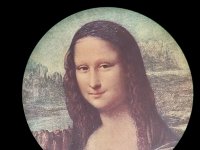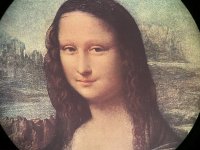GLOBETROTTER
Well-known member
Talking about LEICA.
This 2 photos shows the different color philosophy between Swarovski and Leica, the more pronounced 3D of classic binoculars vs Flat look of flat field design.
1400 Euro binocular vs 2900, I didn't have a sample of 10x42 Retrovid but anyway talking about color the difference is clear.
I do not want to be controversial, nor tell anyone what to do or what to buy.
Simply make it clear that each brand has its own philosophy, learn about optics and really appreciate it, learn about and how difficult color, micro contrast, sharpness can be combined together keeping good 3D, Thats why many cinematographers and photographers use this kind of traditional design lenses and refuse the corner to corner flat looking of new cinematography lenses, good to show up landscapes but bad to show up plane separation and three-dimensional effect.
It seems that Leica is the ugly duck among the 3 big ones but it is not like that, His know-how and his photographic tradition is present on their binoculars,For example the delicate color palette, contrast and transparency of the Retrovid is a good sample of it, close in performance to the Noctivid, And the Noctivid still better on 3D, color than the NL, and way better on Glare.
Talking about SWAROVSKI NL.
The NL is a clear step forward from the EL,(Samples tested 10x42NL vs 10x42FP ), that's something clearly shown on the first look side by side.
The NL has way better contrast and better color than the EL, better tonal gradation of delicate colours, fidelity, clarity, focus snap, definition of signals text, tree leaves......etc etc
Less veiling glare makes contrast pop up.
Was a cloudy day so i can not say anything about peripheral crescent flares, flashes of light and all of those artefacts who shows up looking near of the sun.
The binoculars shows in some cases (Bright light from cloudy sky and looking at backlight buildings )glare covering the 30% of the lower part of FOV, maybe more pronounced or at least on par with the EL 10x42 FP.
This is the greatest weakness of this binocular, perhaps a compromise of the design itself to show that ease of view but there is more....the biggest FOV are not so easy to see than the EL view...the eyes are looking around and the feeling of perfect circle and defined FOV is not there, but since everything is getting used to it, it will be something that is solved with practice.
To summarize and for those SWAROSVKI enthusiasts I have to confirm that the NL worth it, apart from FOV the most important thing is transparency and optical purity, to be able to observe with more quality what we love and respect as nature observers to see it with less glass influence and limitation of FOV just like be there 8,10 or 12 times closer with naked eyes.
A customized lens Shades easy to put and remove from Swarovski can be a good idea, increasing the contrast and performance of view a lot.
Scopes, telescopes, rifle scopes, camera lenses, cinema lenses use it.....why not for binoculars ? they don't have to be all time on, just on those difficult light conditions......just an idea.
Good Day.
This 2 photos shows the different color philosophy between Swarovski and Leica, the more pronounced 3D of classic binoculars vs Flat look of flat field design.
1400 Euro binocular vs 2900, I didn't have a sample of 10x42 Retrovid but anyway talking about color the difference is clear.
I do not want to be controversial, nor tell anyone what to do or what to buy.
Simply make it clear that each brand has its own philosophy, learn about optics and really appreciate it, learn about and how difficult color, micro contrast, sharpness can be combined together keeping good 3D, Thats why many cinematographers and photographers use this kind of traditional design lenses and refuse the corner to corner flat looking of new cinematography lenses, good to show up landscapes but bad to show up plane separation and three-dimensional effect.
It seems that Leica is the ugly duck among the 3 big ones but it is not like that, His know-how and his photographic tradition is present on their binoculars,For example the delicate color palette, contrast and transparency of the Retrovid is a good sample of it, close in performance to the Noctivid, And the Noctivid still better on 3D, color than the NL, and way better on Glare.
Talking about SWAROVSKI NL.
The NL is a clear step forward from the EL,(Samples tested 10x42NL vs 10x42FP ), that's something clearly shown on the first look side by side.
The NL has way better contrast and better color than the EL, better tonal gradation of delicate colours, fidelity, clarity, focus snap, definition of signals text, tree leaves......etc etc
Less veiling glare makes contrast pop up.
Was a cloudy day so i can not say anything about peripheral crescent flares, flashes of light and all of those artefacts who shows up looking near of the sun.
The binoculars shows in some cases (Bright light from cloudy sky and looking at backlight buildings )glare covering the 30% of the lower part of FOV, maybe more pronounced or at least on par with the EL 10x42 FP.
This is the greatest weakness of this binocular, perhaps a compromise of the design itself to show that ease of view but there is more....the biggest FOV are not so easy to see than the EL view...the eyes are looking around and the feeling of perfect circle and defined FOV is not there, but since everything is getting used to it, it will be something that is solved with practice.
To summarize and for those SWAROSVKI enthusiasts I have to confirm that the NL worth it, apart from FOV the most important thing is transparency and optical purity, to be able to observe with more quality what we love and respect as nature observers to see it with less glass influence and limitation of FOV just like be there 8,10 or 12 times closer with naked eyes.
A customized lens Shades easy to put and remove from Swarovski can be a good idea, increasing the contrast and performance of view a lot.
Scopes, telescopes, rifle scopes, camera lenses, cinema lenses use it.....why not for binoculars ? they don't have to be all time on, just on those difficult light conditions......just an idea.
Good Day.









